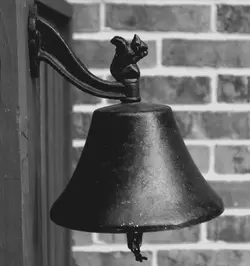Grandpa Ron
Been spending a lot of time on here!
- Joined
- Aug 9, 2018
- Messages
- 1,218
- Reaction score
- 754
- Can others edit my Photos
- Photos OK to edit
My old rule of thumb was black and white photos should be processes with the full tonal range from blackest black to whitest white. I seems to work pretty well but I have found a few issues. I was working with and old Olympus digital 3.2 meg pixel camera.
The first photo is some stone steps, I had to limit the whiteness of the walls or they appeared too bright and washed out.
The second photo, the bell was adjusted for the complete b&w tonal range. It came out as desired.
The third photo, the water fall remains a mystery to me. No matter how I manage the mid tones the blacks are too dark and whites to bright, if I lighten the overall exposure the entire picture seems washed out. Could I have exceeded the latitude capabilities of my old camera?
Finally the fourth photo of the side yard, came out as anticipated, bright highlights and dark shadows. I like this shot; although a like it with a little less contrast also.
So I am curious how others judge the amount of contrast in their b&w photos.
The first photo is some stone steps, I had to limit the whiteness of the walls or they appeared too bright and washed out.
The second photo, the bell was adjusted for the complete b&w tonal range. It came out as desired.
The third photo, the water fall remains a mystery to me. No matter how I manage the mid tones the blacks are too dark and whites to bright, if I lighten the overall exposure the entire picture seems washed out. Could I have exceeded the latitude capabilities of my old camera?
Finally the fourth photo of the side yard, came out as anticipated, bright highlights and dark shadows. I like this shot; although a like it with a little less contrast also.
So I am curious how others judge the amount of contrast in their b&w photos.










![[No title]](/data/xfmg/thumbnail/37/37101-cf094d75976427b415711e9c9955c8a3.jpg?1734169828)



![[No title]](/data/xfmg/thumbnail/31/31095-2b52a6dcc956382cffdd384ae4d156f2.jpg?1734159250)


